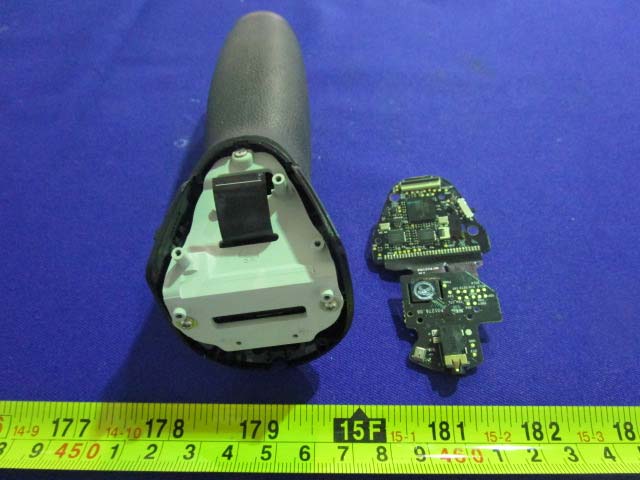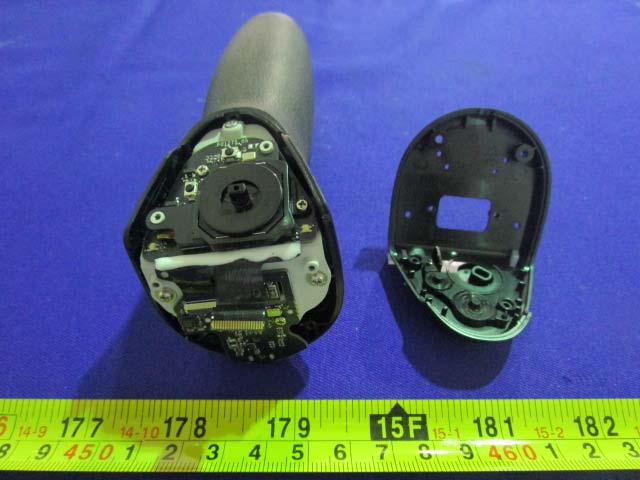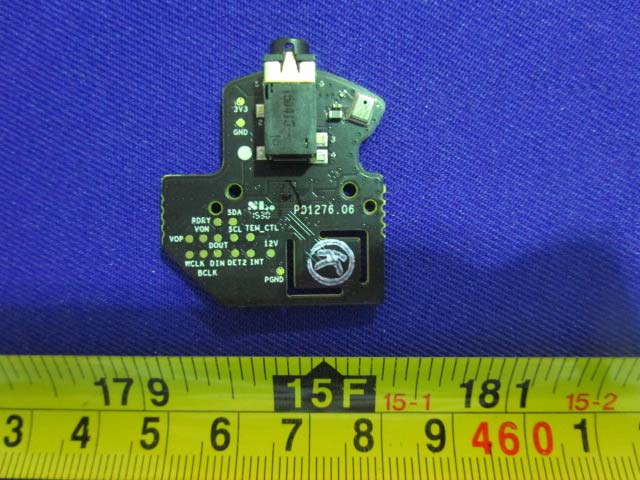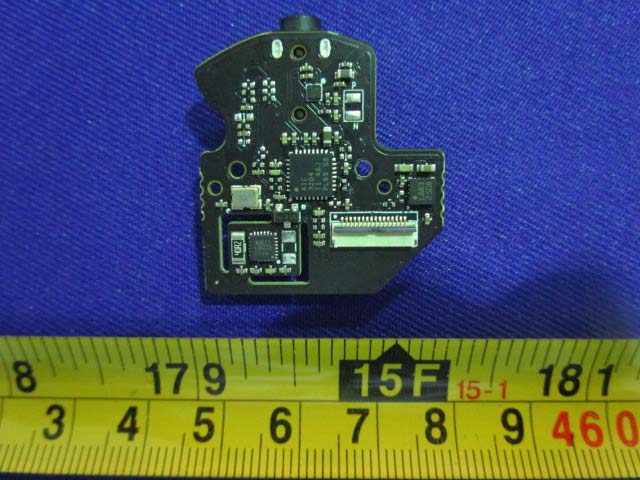Introduction
The DJI Osmo, model ZENMUSE X3, represents a significant advancement in handheld stabilization and camera technology, designed specifically for professional handheld gimbal users. DJI, renowned globally for its innovative drones and camera systems, has engineered the Osmo to deliver cinema-quality video stability in a compact, handheld form factor. Whether capturing smooth professional-grade video or crisp high-resolution stills, the Osmo ensures content creators can achieve remarkable results even in dynamic environments.
Bearing the FCC ID SS3-HG3101508, the Osmo has been certified by the Federal Communications Commission (FCC) to meet stringent electromagnetic interference and RF emission standards. Though the grant date is not specified, the FCC certification indicates that DJI has ensured the Osmo complies with essential regulatory guidelines, making it legally permissible for sale and use in the United States. In this comprehensive analysis, we delve deeply into the Osmo’s key features, internal components, wireless technologies, and regulatory compliance, offering a detailed perspective for tech enthusiasts, engineers, and professional videographers alike.
Key Features & Specifications
Top Features:
- External microphone input: Allows professional audio recording, significantly enhancing video production quality.
- High-speed WiFi video downlink: Provides real-time HD viewing capabilities, essential for precise framing and monitoring.
- Built-in microphone: Captures ambient audio conveniently without additional accessories.
- SmoothTrack technology: Ensures buttery-smooth camera movements, eliminating unwanted shakes and jitters.
- Supports Zenmuse X5 gimbal and camera (with adaptor): Offers flexibility and upgradeability for advanced users.
- 3-axis stabilization gimbal: Guarantees stable and cinematic footage even during dynamic movements.
- Mobile device holder included: Facilitates easy smartphone integration for monitoring and control.
- 12MP still photo capability: Delivers high-resolution images suitable for professional use.
Technical Specifications:
- Battery Type: LiPo (Model HB01-522365, 980mAh, 10.8Wh)
- Battery Operating Temperature: 0° to 50°C
- Battery Life: Approximately 65 minutes continuous use
- Video Recording Modes:
- UHD 4096×2160p (24/25 fps)
- 3840×2160p (24/25/30 fps)
- 2.7K 2704×1520p (30 fps)
- Full HD 1920×1080p (24/25/30/48/50/60 fps)
- HD 1280×720p (24/25/30/48/50/60 fps)
- Max Video Bitrate: 60 Mbps, ensuring detailed video capture
- Photo Resolution: 4000×3000 pixels, ideal for professional-grade stills
- Wireless Connectivity: Wi-Fi and Bluetooth (integrated, details unspecified)
Operating Frequencies
The Osmo operates across several frequency bands, as outlined in the FCC filing:
| Frequency Range (GHz) | Output Power (mW) | FCC Rule Part |
|---|---|---|
| 2.412-2.462 | 14.16 | 15CCC1.12.422 |
| 2.452 | 22.08 | 15CCC1.25.18 |
| 5.23 | 5.6 | 15ECC2.25.745 |
| 5.24 | 5.5 | 15ECC2.15.19 |
| 5.795 | 5.7 | 15ECC2.4 |
| 5.825 | 5.2 | 15ECC2.35.755 |
These carefully selected frequencies facilitate reliable wireless communication, minimizing interference and ensuring stable connectivity, crucial for high-quality real-time video streaming and remote control capabilities.
Technology Deep Dive
The DJI Osmo leverages integrated Wi-Fi and Bluetooth technologies to provide seamless wireless connectivity. Utilizing common 2.4GHz and 5GHz bands, the device ensures robust, high-speed data transmission, ideal for live HD video feeds and responsive remote control. The dual-band Wi-Fi capability significantly reduces signal interference, enhancing range and reliability, especially in congested environments.
Bluetooth integration further simplifies device pairing with smartphones and accessories, offering low-power connectivity for extended battery life. The carefully managed RF output power and frequency selection indicate DJI’s emphasis on balancing performance, battery efficiency, and regulatory compliance, ensuring minimal interference with other electronic devices and adherence to FCC guidelines.
In-Depth Internal Component Analysis / Teardown
The internal design reveals DJI’s meticulous approach to integration and compactness. Two densely populated PCBs showcase sophisticated multi-layer routing, likely housing microcontrollers or SoCs for real-time processing and power management. The presence of FPC connectors suggests modularity, facilitating easier repairs and upgrades. High-quality capacitors and inductors underline robust power regulation and noise suppression, essential for stable device operation and signal integrity. Test points visible on the board highlight DJI’s commitment to rigorous quality control during manufacturing.

A camera-centric PCB prominently features a lens assembly alongside a high-density layout. Differential pair routing indicates high-speed data transmission, likely for image processing. The absence of visible shielding suggests internal EMI management or non-critical EMI sensitivity for this board segment. Its robust build quality aligns with professional imaging standards, emphasizing DJI’s focus on reliability and performance.

A smaller interface PCB exhibits straightforward design, possibly serving as a sensor or accessory interface. Clear labeling for SDA/SCL lines and power rails underscores its role in peripheral management and ease of testing. Its simplified layout and clear markings indicate a focus on functionality and ease of integration.

The main control PCB features a central SoC or microcontroller, essential for processing and control tasks. High-density routing and fine-pitch components suggest a high-performance digital environment. Capacitors and inductors emphasize local power regulation, while the presence of a large connector hints at modularity and ease of maintenance.

Another PCB showcases compact layout and EMI shielding, indicating attention to interference management. The use of ribbon connectors emphasizes modularity, facilitating simpler assembly and maintenance processes.

Regulatory Insights & FCC Filing
The FCC certification under ID SS3-HG3101508 confirms DJI Osmo’s compliance with U.S. electromagnetic interference standards. FCC filings typically include detailed test reports on RF exposure, electromagnetic compatibility (EMC), internal photographs, block diagrams, and user manuals. While the grant date isn’t specified, the registered status ensures legality for sale and operation within the U.S., providing confidence in the device’s safety and reliability.
Potential Use Cases & Target Audience
The DJI Osmo is ideal for professional videographers seeking smooth, cinematic footage in dynamic scenarios, such as action sports filming, event coverage, or documentary production. Content creators benefit from real-time HD viewing capabilities via high-speed WiFi, enabling precise framing and immediate feedback. Additionally, journalists and vloggers appreciate its compactness, external audio input, and high-resolution still capture, facilitating versatile content creation in varied environments.
Conclusion
In summary, the DJI Osmo (FCC ID SS3-HG3101508) merges advanced stabilization technology, professional imaging capabilities, and robust wireless connectivity into a compact handheld device. Its FCC certification underscores DJI’s commitment to regulatory compliance, ensuring safe operation and consumer confidence. For professionals demanding cinematic quality and reliability, the Osmo stands out as a technological benchmark in handheld imaging solutions.